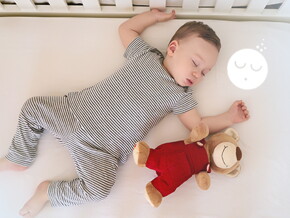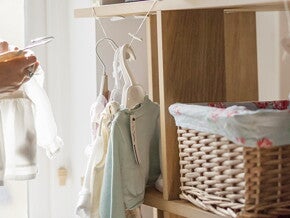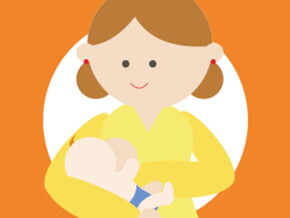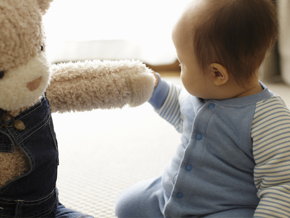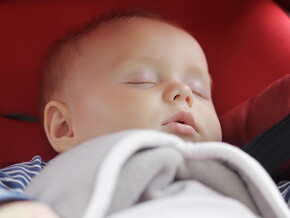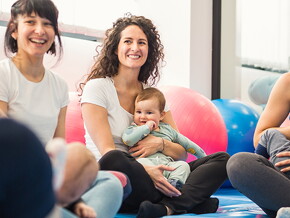
Top tips for better sleep at 3–6 months
Daytime ‘do’s
- Get physical: Your baby may sleep better if she’s exercised her mind and body so make time for daily activity and stimulation, such as ‘tummy time’.
- Know your nap times: Try to set regular times for daytime naps and bear these in mind when you’re planning your day together.
- Keep it calm: Where your baby sleeps should be a dedicated relaxation zone with a quiet atmosphere and low-level lighting. Banish distracting TVs, laptops, and tablets.
- Hang in there: As your baby approaches four months, try to keep her awake a little bit longer if it is getting close to bedtime. Instead of a nap just an hour before bedtime, give her a bath and massage, or read her a story.
Better bedtimes
- Time it right: Start to put your baby to sleep at the same time every night. Experts have found that putting your baby to bed at the same time every evening can increase her chances of getting enough sleep.
- Offer a feeding: As she gets a little older, and is able to sleep five to six hours at night, offer your baby a feeding just before bedtime. This may help her to sleep for the next several hours. Extra-absorbent diapers can also be a useful way to maximize sleep.
- If your baby is on bottle feeding, do not add any cereal or other foods to the bottle. This practice has not been shown to increase the length of time she will sleep.
- Set a routine: Follow your own pre-sleep pattern with tips from our Bedtime Routine Checklist.
- Separate sleep: Your baby needs to learn to sleep alone, so put her to bed in her own crib rather than letting her share with you.
- Share a room: Because the risk of SIDS (Sudden Infant Death Syndrome) has been shown to be reduced when babies sleep in the same room as their parents, some national guidelines recommend that you have your baby sleep in the same room with you at least until she is six months old (and ideally until a year of age).
- Settle into sleep: Put your baby down when she is sleepy but still awake. Once she knows the routine, she will start to fall asleep on her own. Let her learn how to settle herself once she is in her crib.
- Clean crib: For safe sleeping, only your baby belongs in the crib. Do not give your baby a pillow, blankets, quilt, sheepskin, stuffed toys, or anything that can cause her to suffocate. Cover the mattress with a tight-fitting sheet.
- Keep her comfortable: Check your baby’s sleeping area isn’t too hot or too cold. In general, your baby should be dressed in one more layer of clothing than you’re wearing.
Get it right at night
- Take your time: Give your baby a chance to resettle or ‘self soothe’ before you rush in and you’ll help reduce the number of times she wakes up in the future. That’s good news for both of you!
- Put the hugs on hold: If you’re checking on your baby, don’t automatically pick her up. Instead, rub her gently or sing a lullaby. Reassure her that you are there for her without rewarding every cry with a cuddle.
- Think before you feed: You might assume that your baby is hungry every time she wakes up at night, but by four months she may be able to go five to six hours between feeds and could just be looking for comfort. Feeding your baby every time she wakes will actually make her nights less settled.
- Stick with the crib: If you do need to feed or change your baby at night, don’t be tempted to bring her into bed with you afterwards. Always put her back in her crib so she gets used to falling back asleep on her own.
Sources
https://healthychildren.org/English/ages-stages/baby/sleep/Pages/Back-to-Sleep-Tummy-to-Play.aspx (Accessed December 29 2016)
https://healthychildren.org/English/ages-stages/baby/sleep/Pages/Preventing-SIDS.aspx (Accessed December 29 2016)
https://healthychildren.org/English/ages-stages/baby/sleep/Pages/A-Parents-Guide-to-Safe-Sleep.aspx (Accessed December 29 2016)

